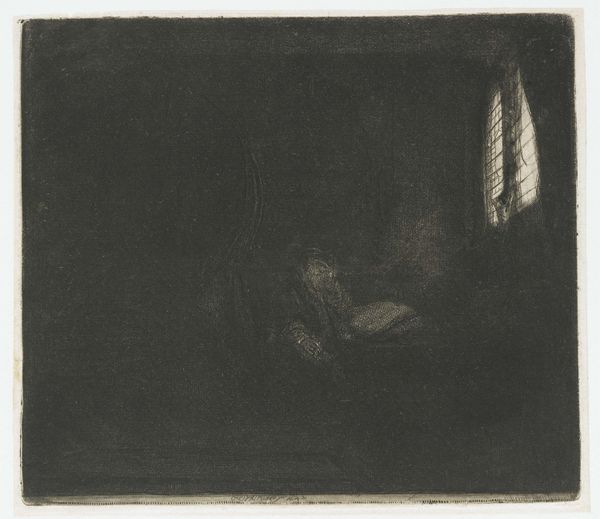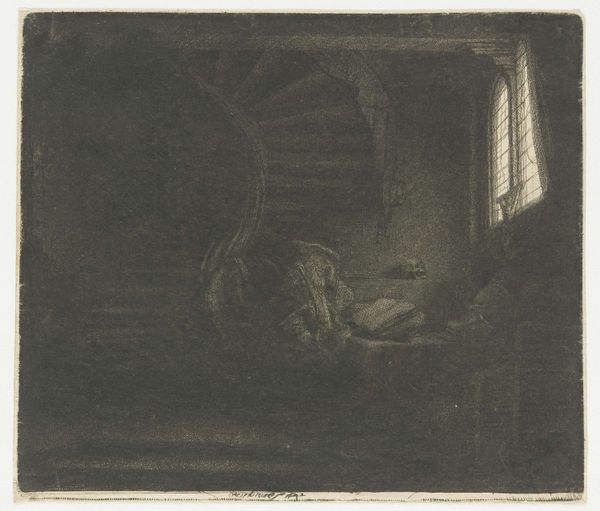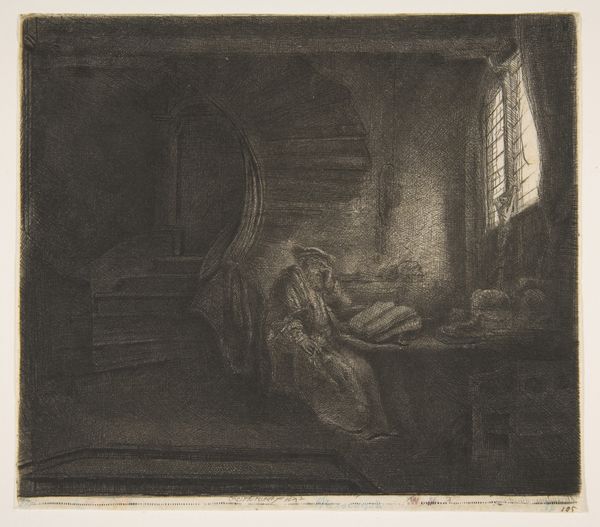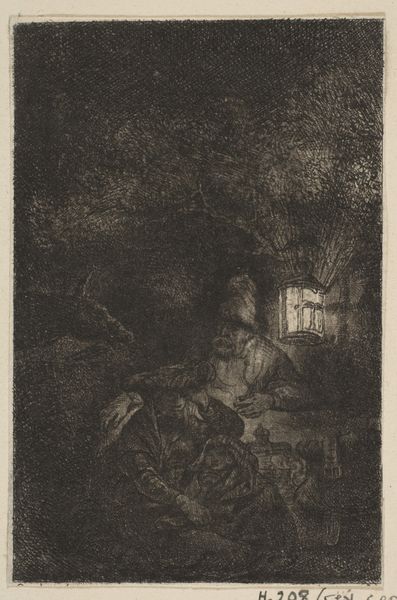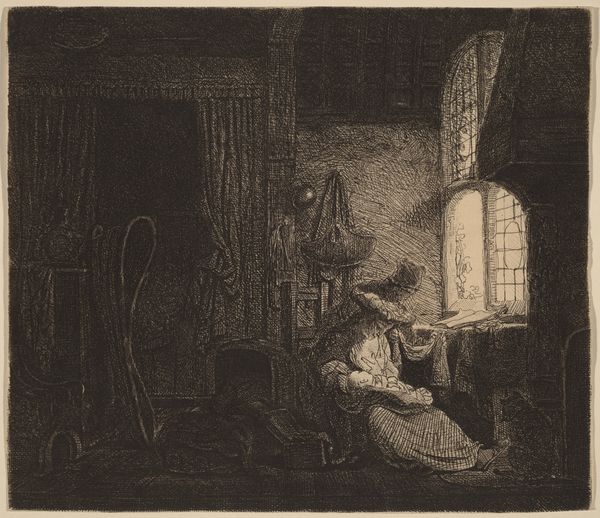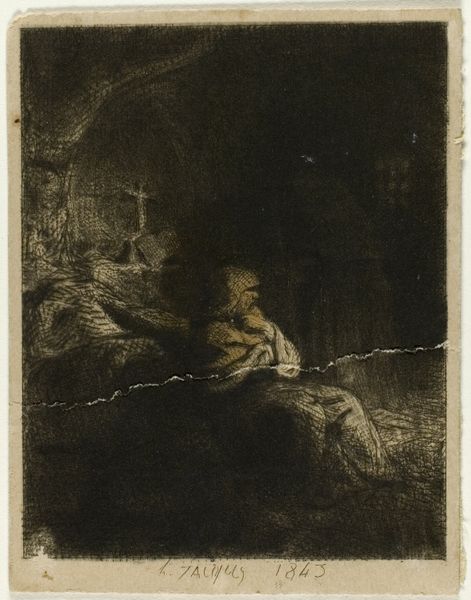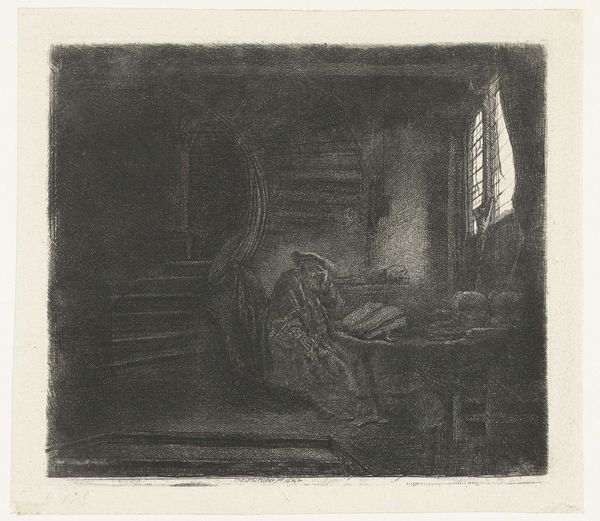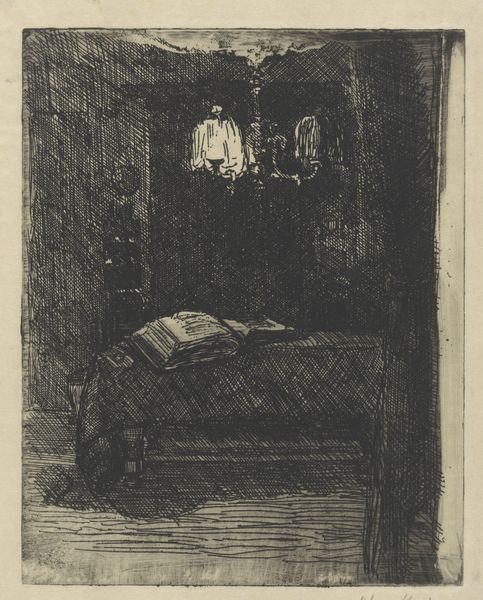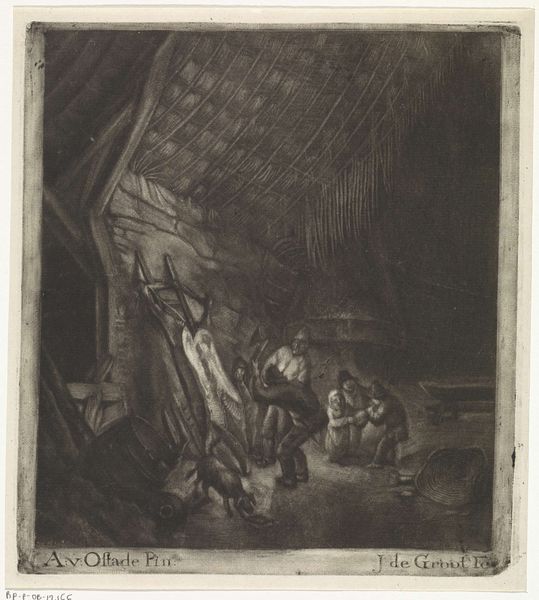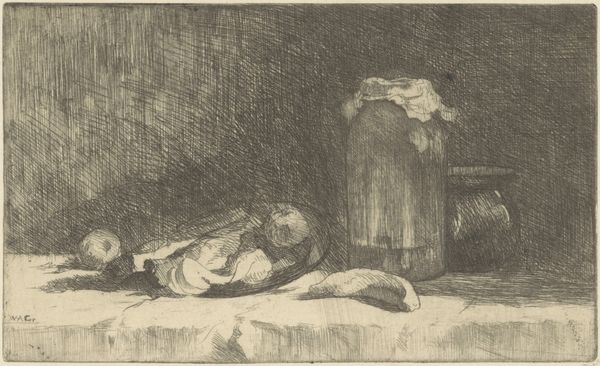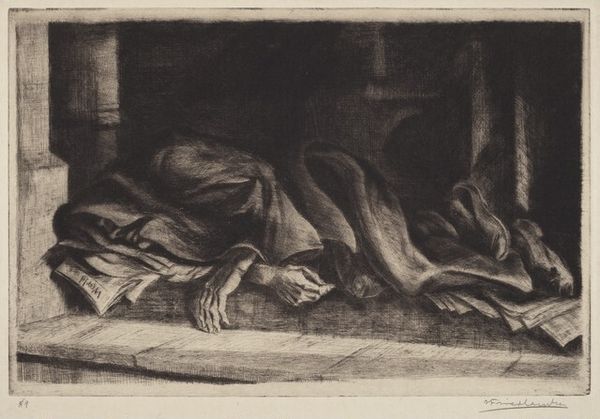
print, etching, drypoint
#
portrait
#
narrative-art
#
baroque
#
dutch-golden-age
# print
#
etching
#
chiaroscuro
#
history-painting
#
drypoint
Dimensions: 5 7/8 x 6 11/16 in. (15 x 17 cm) (plate)
Copyright: Public Domain
Editor: So, this is Rembrandt van Rijn's "Saint Jerome in a Dark Chamber" from 1642. It's an etching, drypoint and engraving print. It feels incredibly intimate and almost claustrophobic due to the darkness. What strikes you about it? Curator: The layering of Rembrandt's process. Think about the sheer labour involved in creating such tonal variation with etching and drypoint alone, carefully building up the darks, scratching into the plate. Consider the social implications of printmaking – making images accessible. What does it mean to depict a scholar, like Saint Jerome, in a manner that, through the material process, invites wider participation in knowledge? Editor: That's a compelling point about accessibility! So the choice of printmaking itself, beyond just Rembrandt's style, speaks to something? Curator: Absolutely! Etching wasn't as precious or controlled a medium as, say, painting for the wealthy elite. The reproduction aspect allowed ideas and images to circulate more freely. Look at the contrasts – the precious knowledge held within books rendered through a democratized medium. What does that tension tell us about 17th century Dutch society? Editor: I see. So, he’s depicting the scholar in the middle of his study, a rather 'intellectual' subject...using this method to possibly broaden knowledge and information to all...not just a painting for the rich in their homes? That makes so much sense. Curator: Precisely! It challenges the concept of singular authorship too. Think of the workshop environment where these prints were produced – labor, collaboration, the value placed on skill versus individual genius. It all comes into play. Editor: This perspective is something I didn't think of upon seeing it originally. It truly speaks to Rembrandt's creative genius to promote shared information. Thanks for shining some light on the process and accessibility through labour!
Comments
minneapolisinstituteofart almost 2 years ago
⋮
Jerome, the 4th-century scholar who translated the Bible into Latin, described his experience in Rome's catacombs as "walking in darkness like that of Hell, pierced by rare beams of light." This description resonates with Rembrandt's meditations at this juncture of his life. One enters the print as if it were a darkened room. If we concentrate, the details begin to emerge as our eyes adjust. By controlling entry into the image, Rembrandt allowed the print to work on the viewer, gradually revealing its interior mood.
Join the conversation
Join millions of artists and users on Artera today and experience the ultimate creative platform.
